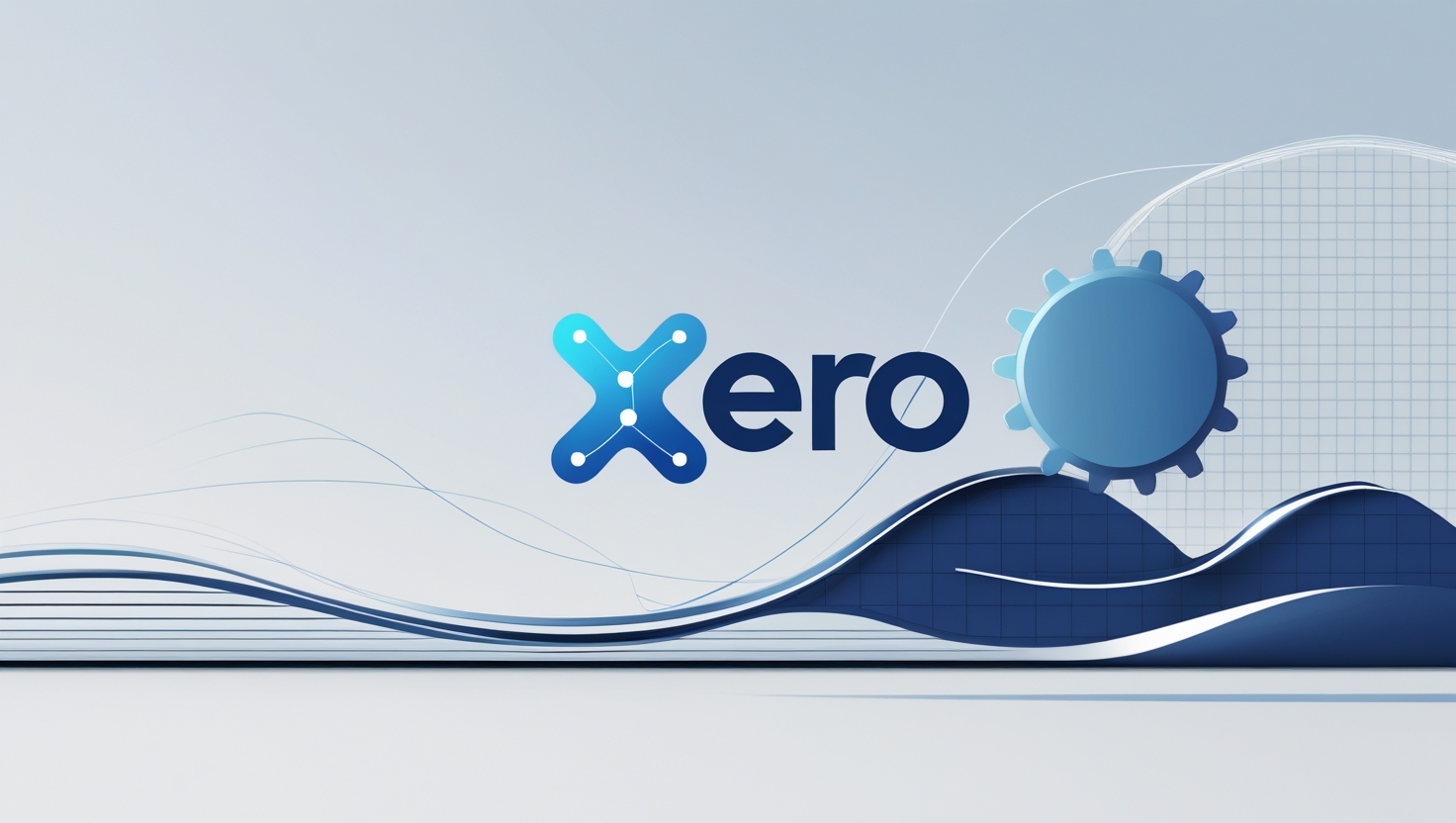As your Australian business expands, so does the complexity of your operations. From sales to payroll, inventory to CRM, juggling multiple systems can quickly become a headache – unless they all 'talk' to each other. This isn't just about avoiding manual data entry (though that's a huge win!); it’s about ensuring data accuracy, gaining real-time insights, and making informed decisions that drive sustainable growth. Disparate systems inevitably lead to inefficiencies, errors, and wasted time – resources no growing business can afford to lose.
In the vibrant Australian business landscape, Xero and MYOB stand as the two dominant accounting software giants. Both offer powerful accounting features, but their approaches to integrating with the vast ecosystem of business tools differ significantly. For Australian business owners and executives, the choice isn't just about accounting features; it's about finding a system whose integration capabilities simplify your life, empower your team, and scale seamlessly with your ambition.
This blog post will delve into the great debate: which platform, Xero or MYOB, offers a more user-friendly integration ecosystem for growing Australian businesses? We’ll explore what 'user-friendliness' truly means in this context, examine each platform's philosophy, and help you understand which might be a more intuitive fit for your unique growth journey.
Understanding "User-Friendliness" in the Integration Context
Before we dive into the direct comparison, let's clarify what "user-friendliness" truly means when we're talking about software integrations. It's far more than just a pretty interface; it encompasses several critical factors that impact your team's efficiency and your business's data integrity:
- Ease of Discovery: How straightforward is it to find relevant apps, add-ons, or integration partners that address your specific business needs (e.g., CRM, e-commerce, time tracking, project management)?
- Simplicity of Connection: Once an app is identified, how easy is the actual linking process? Is it a few clicks and authentications, or does it require technical expertise, complex configuration, or developer involvement?
- Reliability & Stability: Do integrated systems consistently work together without frequent breakdowns, data synchronisation issues, or errors that require constant manual intervention?
- Support & Documentation: Is readily available help (from the software vendor or the app developer) at hand if something goes wrong, or if you need guidance on optimising an integration? Are there clear, accessible guides?
- Scalability: Can the integration handle increased data volume, transaction loads, and new business processes as your company grows, without performance degradation or requiring a complete re-build?
- Data Flow & Visibility: How seamlessly does data move between systems? Can users easily access and understand integrated information from a central dashboard, or do they need to jump between multiple platforms?
Keeping these factors in mind, let's explore how Xero and MYOB stack up.
Xero's Approach to Integration: The "App Store" Experience

Xero, born in the cloud, has built its integration philosophy around an "open ecosystem" or "app store" model. Its core offering is powerful, but its true strength lies in its extensive network of connected applications.
-
Philosophy: Xero positions itself as a central hub, designed to connect with a vast array of specialist applications. The idea is that businesses can pick and choose the best-of-breed solutions for each specific function (e.g., inventory, CRM, payroll), and Xero will seamlessly pull all the financial data together.
-
App Marketplace: The Xero App Marketplace is a cornerstone of its ecosystem. It boasts thousands of apps across virtually every business category imaginable, from popular e-commerce platforms like Shopify to CRM systems like Salesforce, and industry-specific tools. It's structured for easy searching, filtering, and categorisation, making app discovery generally intuitive.
-
"Connect App" Simplicity: For many common integrations, Xero prides itself on a "click-and-connect" or "plug-and-play" experience. The typical process involves finding the app in the marketplace, clicking "Connect," authorising the connection (often via OAuth), and then performing some basic data mapping. This self-service nature is a significant draw for non-technical users.
-
User-Friendliness Angle:
- Intuitive Interface: Xero's clean, modern UI extends to its integration settings, making the process less intimidating for business owners and managers who aren't IT experts.
- Focus on SMB Needs: Xero's ecosystem is largely designed with the typical Australian SMB growth path in mind, offering a broad spectrum of solutions that fit early-stage scaling and diverse needs.
- Developer Friendly (enabling simplicity): While the end-user experience is simple, this is underpinned by a robust and well-documented API for developers, which encourages third-party innovation and ensures high-quality connections.
-
Potential Drawbacks (from a user-friendliness perspective):
- "Too Much Choice"? For some, the sheer volume of available apps can be overwhelming, leading to analysis paralysis without clear guidance on which app is truly best for their specific scenario.
- Reliance on Third Parties: While generally excellent, the quality of support and ongoing development for third-party apps can vary, meaning your experience might depend on the individual app developer.
- Less "Built-In" Solutions: Some functionalities might require an integration in Xero, whereas MYOB might offer them natively within its core product suite.
MYOB's Approach to Integration: The "Comprehensive Suite" Mindset

MYOB, with its long and deep roots in the Australian market, often presents a more "comprehensive suite" or "all-in-one" solution philosophy. While they have embraced cloud and integration, their historical strength lies in providing robust native features.
-
Philosophy: MYOB has traditionally aimed to provide a powerful, often more feature-rich, core accounting product that can handle many business functions without needing extensive external integrations. Its transition from desktop to cloud has seen a significant investment in its own cloud offerings and integration capabilities.
-
MYOB Add-on Centre / Integrated Features: MYOB offers an "Add-on Centre" with a growing list of integrated partners. However, MYOB often provides deeper native functionality in certain areas (e.g., more complex payroll scenarios, specific job costing features, or industry-specific compliance requirements, particularly in their higher-tier products like MYOB AccountRight).
-
MYOB API & Partner Network: MYOB has a strong API and a dedicated partner network. Many of their integrations are with well-established Australian business solution providers, leading to what can feel like very tightly integrated solutions, especially between different MYOB products or certified add-ons.
-
User-Friendliness Angle:
- Familiarity for Long-Term Users: For businesses migrating from older MYOB desktop versions, the transition to cloud-integrated solutions might feel more comfortable and familiar due to brand recognition and established workflows.
- Reduced "App Fatigue": If MYOB's extensive native features meet many of a business's needs, it might require fewer third-party integrations, potentially simplifying the overall system landscape for the user.
- Dedicated Support: MYOB often provides more direct support for its core products and certified integrations, which can be reassuring for businesses seeking a single point of contact for issues.
-
Potential Drawbacks (from a user-friendliness perspective):
- Steeper Learning Curve for Some Integrations: While core features are familiar, some third-party integrations, particularly those involving more complex data flows, might require more technical setup or configuration compared to Xero's often simpler "plug-and-play" model for common apps.
- Legacy Influence: While MYOB has made huge strides in the cloud, some aspects of its ecosystem might still reflect its desktop origins, potentially impacting the perceived seamlessness of the cloud-native integration experience for some users.
- Fewer Niche Apps: While growing, the breadth of the MYOB Add-on Centre for highly specialised, niche business functions might be perceived as smaller when compared to Xero's vast global marketplace.
The Head-to-Head: User-Friendliness in Practice
Let's break down the user-friendliness aspects in a direct comparison:
| Feature/Aspect |
Xero Integration Ecosystem |
MYOB Integration Ecosystem |
| App Discovery |
Highly intuitive App Marketplace, easy filtering. |
Curated Add-on Centre, often via partner recommendations. |
| Integration Setup |
Often self-service, quick "connect" process. |
Can be self-service; some integrations may require more technical configuration or partner assistance. |
| Data Sync Reliability |
Generally strong, relies on third-party app quality. |
Generally strong, especially with certified add-ons. |
| Troubleshooting |
Community support, direct app developer support. |
Direct MYOB support, partner network support. |
| Scalability |
Excellent for scaling with diverse SaaS tool adoption. |
Strong for businesses needing deep native features and established industry solutions. |
| Core Philosophy |
Cloud-first, open ecosystem, best-of-breed. |
Established, comprehensive suite, growing cloud integrations. |
| Ideal For |
Agile startups, businesses leveraging many SaaS tools, those valuing broad choice. |
Businesses needing robust native features, those with specific industry requirements, or those migrating from older MYOB versions. |
Scenarios for Growing Australian Businesses:
- Startup/Rapid Growth with SaaS Tools: If your business is rapidly adopting a suite of cloud-based tools (e.g., Shopify, HubSpot, Deputy), Xero's broader and often more agile integration ecosystem might feel more intuitive and quick to set up.
- Established Business with Complex, Industry-Specific Needs: If your business has unique payroll complexities, intricate job costing requirements, or relies on industry-specific software with deep integrations, MYOB's robust native features or its well-integrated certified add-ons might provide a more stable and user-friendly experience from the outset.
- The "It Depends" Factor: Ultimately, there's no single "winner." The most user-friendly ecosystem is the one that best fits your specific business processes, your existing technology stack, and your projected growth trajectory. What's simple for one business might be complex for another.
Beyond the Interface – The Power of the Right Partnership

We've explored the distinct philosophies of Xero and MYOB when it comes to integrations, and how their respective ecosystems influence user-friendliness for growing Australian businesses. Xero shines with its vast, self-service app marketplace, making it easy to connect a wide array of cloud tools. MYOB, with its deeper native features and strong partner network, often provides a more comprehensive, integrated suite for specific industry needs.
The real takeaway? "User-friendliness" in integration isn't just about the software's interface; it's about how well the entire ecosystem supports your unique business processes, streamlines workflows for your team, and provides you with the accurate data you need to thrive. Both platforms are constantly evolving, making the choice dynamic and often complex.
This is where expert guidance becomes invaluable. Off-the-shelf solutions, even from leading platforms like Xero and MYOB, don't always perfectly fit the nuanced, evolving needs of a growing Australian business. You might have unique legacy systems, highly specialised data flows, or a vision for automation that goes beyond standard integrations.
Unlock Your Business's Full Potential with C9
Don't let integration challenges hold your business back. At C9, we go beyond simply comparing platforms – we engineer tailored solutions that empower your business.
Whether you lean towards Xero's broad app marketplace or MYOB's robust core, our team of Australian-based custom software, apps, integration, and database developers specialises in bridging the gaps. We can help you:
- Assess your unique business needs and identify the ideal integration strategy.
- Design and develop custom integrations that perfectly connect your existing systems (even complex legacy ones!) with Xero, MYOB, or any other critical software.
- Develop bespoke applications that extend the functionality of your accounting software, automating workflows and unlocking new efficiencies.
Our goal is to create an accounting and operational ecosystem that is truly user-friendly for your team, driving efficiency, accuracy, and profitability.
Ready to explore how truly integrated systems can transform your growing business? Contact C9 today for a no-obligation consultation. Let's discuss your current systems, your growth aspirations, and how we can craft a custom integration strategy that empowers your business to thrive in the competitive Australian market.
Visit our website